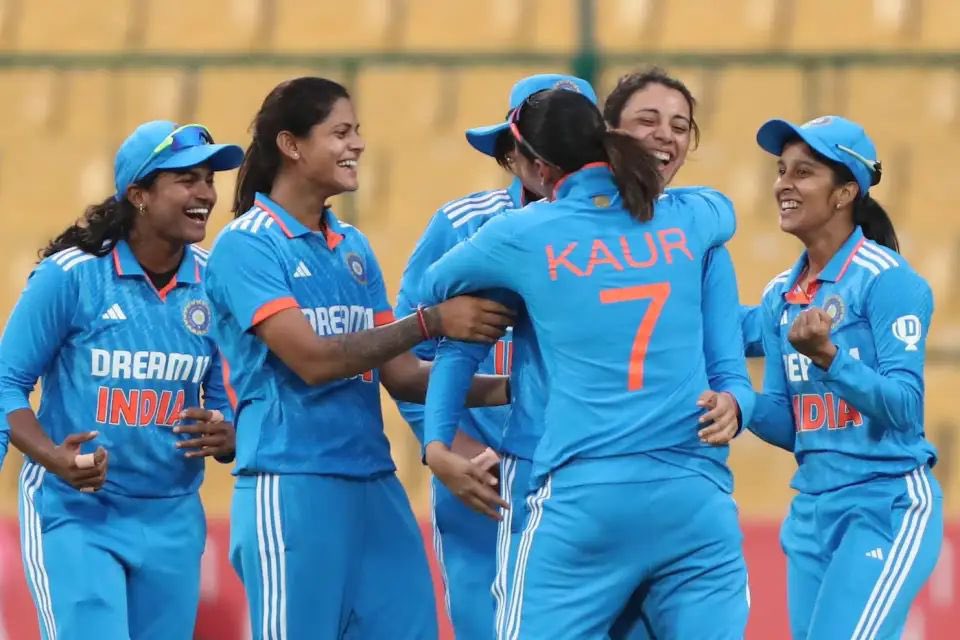
Indian women’s cricket fans are always on the lookout for thrilling matches, and the second ODI between India-W and South Africa-W proved to be a spectacle worth every minute. The match delivered an astonishing display of cricket with four centuries, over 600 runs scored, and a heart-stopping final over, making it an unforgettable experience for everyone involved.
“It was one of those moments where you have to let out your emotions,” said Amol Mazumdar, the India coach, afterwards. “It was an exciting game to watch not from the dugout but from the crowd.”
South Africa won the toss and put India in to bat. Little did they know they were in for a long day. The Women in Blue had pulled up their socks and posted a mammoth total, including centuries from both Smriti Mandhana and Harmanpreet Kaur. However, the excitement didn’t end there. South Africa fought back valiantly, with centurion Laura Wolvaardt leading the charge alongside Marizanne Kapp, who also scored a century. The match came down to the wire, with South Africa needing 5 runs off the last ball. In a nail-biting finish, Wolvaardt was unable to hit the required runs, and India sneaked home by a mere 4 runs.
Another positive to be mentioned is Richa Ghosh. The young wicketkeeper-batter seems to have utmost clarity about her role and is executing her plans well, giving the team a strong boost with her clean, power-hitting ability.
Despite the thrilling win and the impressive total posted by India, questions remain about the team’s overall strategy. The narrow margin of victory suggests that while the batting lineup is formidable, there may be vulnerabilities.
The decision to promote Dayalan Hemalatha up the order
The decision to send Hemalatha up the order raised some eyebrows considering that she is essentially known for her hitting skills down the order. Her presence at No. 3 was underwhelming, especially if you compare it to the rest of the batting lineup who had impressive outings. Hemalatha scored 24 off 41 deliveries with a lacklustre strike-rate of 58.54.
On the other hand, Jemimah Rodrigues, a batter whose game is ideally suited to the top order, was surprisingly positioned at No. 6 in the lineup. Despite Rodrigues being a phenomenal talent, this decision appears peculiar given her playing style. She is not known for being a big hitter and typically requires time to settle in at the crease, making her less effective in the lower order where quick runs are often needed.
From the outside, the batting lineup would seem more balanced and strategically sound if Hemalatha and Rodrigues switched places. Hemalatha, with her ability to score quickly, could provide the necessary firepower in the latter stages of the innings, while Rodrigues could anchor the top order, building a solid foundation for the team. This adjustment could potentially optimise the team’s performance and address some of the strategic gaps observed in the match.
Shafali Verma’s bad patch continues
After a few impressive innings in the Women’s Premier League, Shafali still seems to be struggling to reclaim her aggressive, fearless and nothing-to-lose batting style. In the two matches that India and South Africa have played, she has failed to even reach double-digits.
In the two matches, Shafali struggled to get off the mark and play her natural game. In both games, she got out while trying to attempt ambitious shots. Her inability to settle at the crease and find her rhythm has raised concerns about her current form and mindset.
Shafali’s uncharacteristic performances underscore the pressure she may be feeling and the need for her to regain confidence. A return to her natural, fearless approach is crucial not only for her individual success, but also for strengthening the team’s batting.




